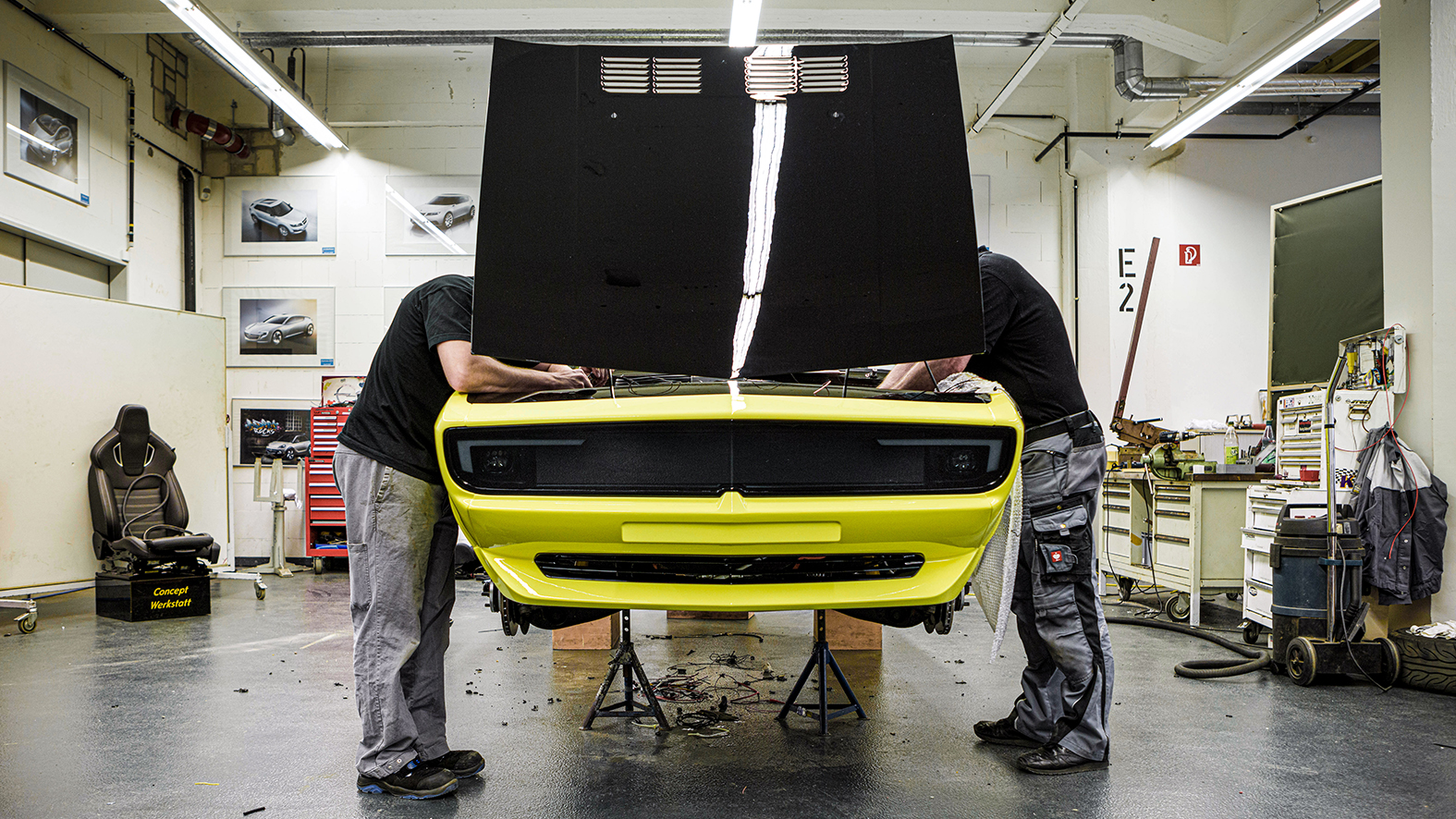It is a car that stirs emotions, that inspires people, that challenges the linearity of time: created five decades ago, transformed into an Opel of the future – the Manta GSe ElektroMOD. But who or what ignited the initial spark? On the one hand, the Opel Classic experts, who have closely followed the trend in the scene towards ‚RestoMods‘, i.e. classic vehicles with modern drives, marked the start. Then there are designers who, during a Sunday “Cars and Coffee” drive through the Taunus, played through the idea of electrifying a classic car. At the same time, Opel’s e-offensive is in full swing with new models like the Opel Mokka-e.
Out of pure love
of the automobile
So the idea was there: why not give an Opel classic car a new lease of life electrically? With plenty of torque for fast sprints without a lot of noise. Just a dream? No way. The decisive factor was that in the late summer of 2020 all these colleagues got together, inspired others to join them and they all began to implement the idea together. It quickly became clear which classic car they wanted for the RestoMod experiment – the Manta A. After all, it was the model that was the inspiration for the development of the Opel Vizor, the new Opel brand face.
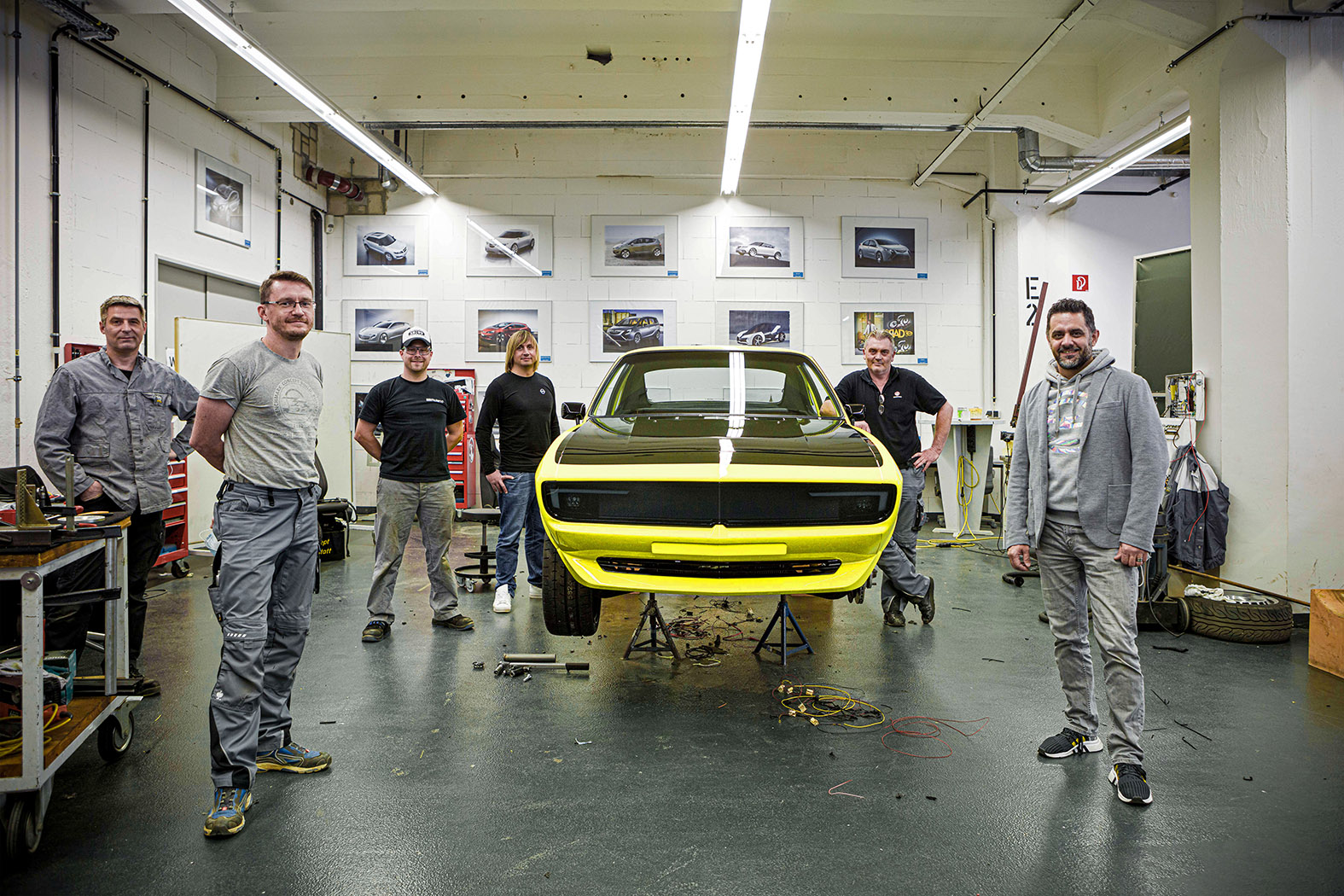
▲Teamwork: Pictured are (from left) Michael Splieth, Roman Rudek and Mario Heymann, and on the right next to the car Tony Bailey from the Concept Workshop. Peter Junghanns (back left next to the car) is Opel Brand Manager, Pierre-Olivier Garcia (right) Global Opel Brand Designer.
► Manta in 3D: Before the team started planning the conversion, a digital scan was made in N20.
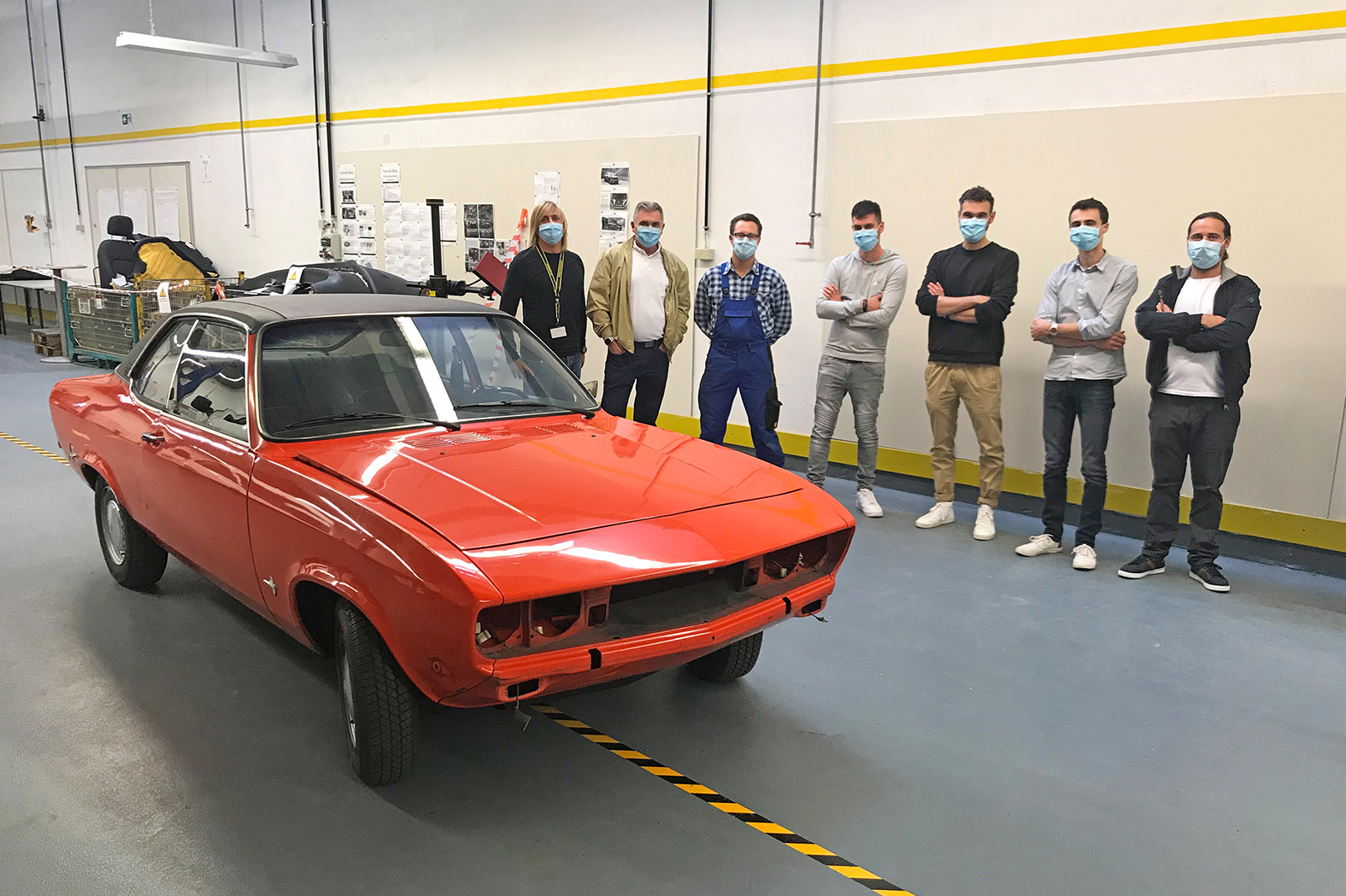
From the Classic Collection:
A parts carrier awakens
In Opel Classic’s inventory of around 500 vehicles, two Manta A cars were found that were suitable for this project. The team decided on an orange model with a black vinyl roof and automatic transmission that Opel had been given in 1988 from the original owner, a lady in Wiesbaden. She had bought the Manta new in 1974 and driven it for 14 years. It was still unrestored, perhaps more of a parts carrier. But its bodywork was in good shape, it only needed a little welding in two places. The distinctive colour – the new Opel yellow – was applied by the paint shop of the Service Workshop only after the car had already been electrified and passed the TÜV test.
The original Manta A seats from back then were out of the question, they didn’t even have head restraints – no one wants to imagine that today, let alone drive a car like that. That’s why the team turned to Recaro seats, as they were also used in the Opel ADAM S. But it wasn’t a straightforward swap and they had to be customised for this model. To do this, the team at the Concept Workshop was able to draw on a digital scan that 3D modellers had made in collaboration with colleagues from the design department.
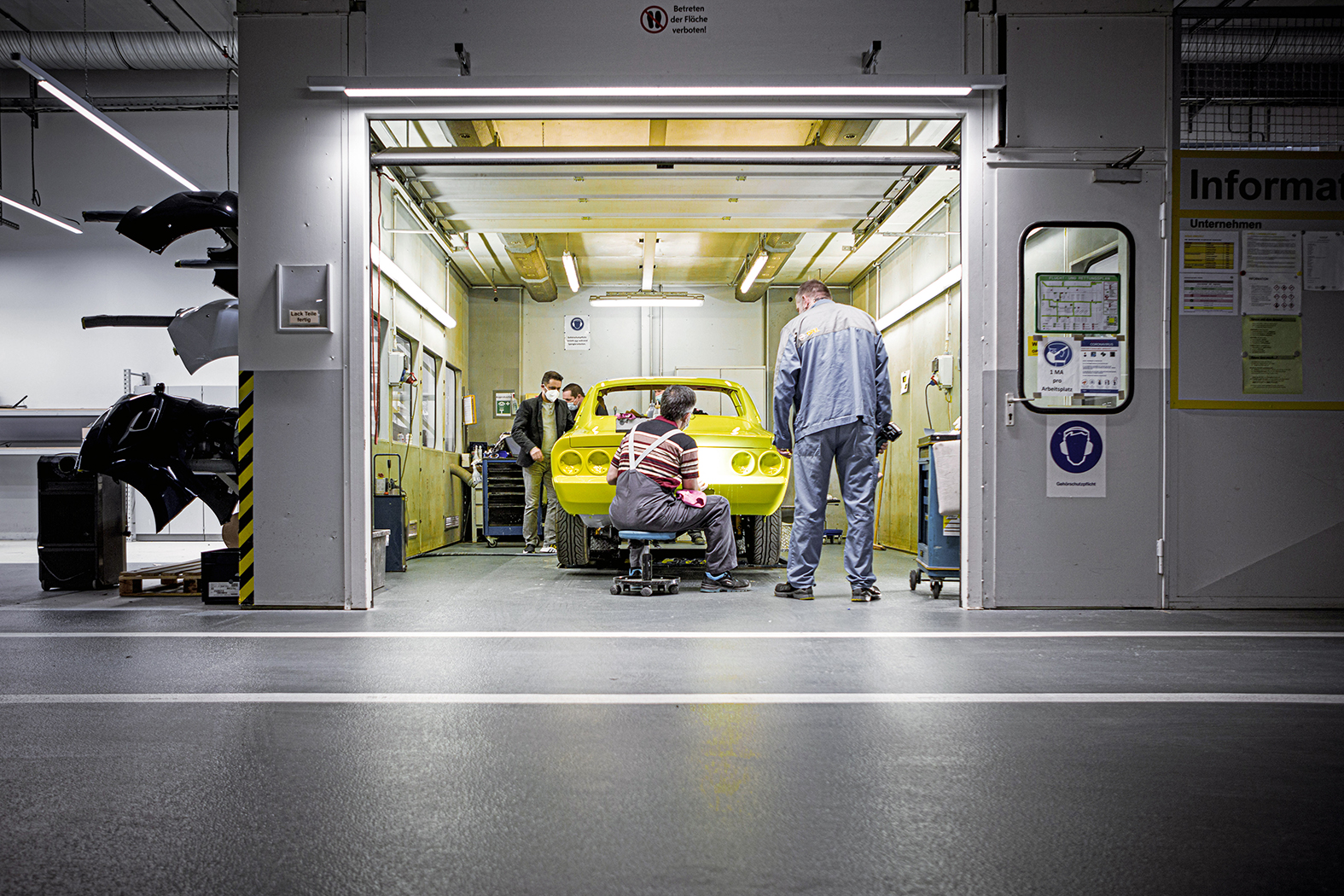
▲ Colleagues from the Service Workshop contributed their expertise: The panel-beaters Ünsal Keser (seated) and Stefan Weber make adjustments after the car was painted.
► An eye for precision: Before the black paint is applied, designer Pierre-Olivier Garcia masks the bodywork with special tape.
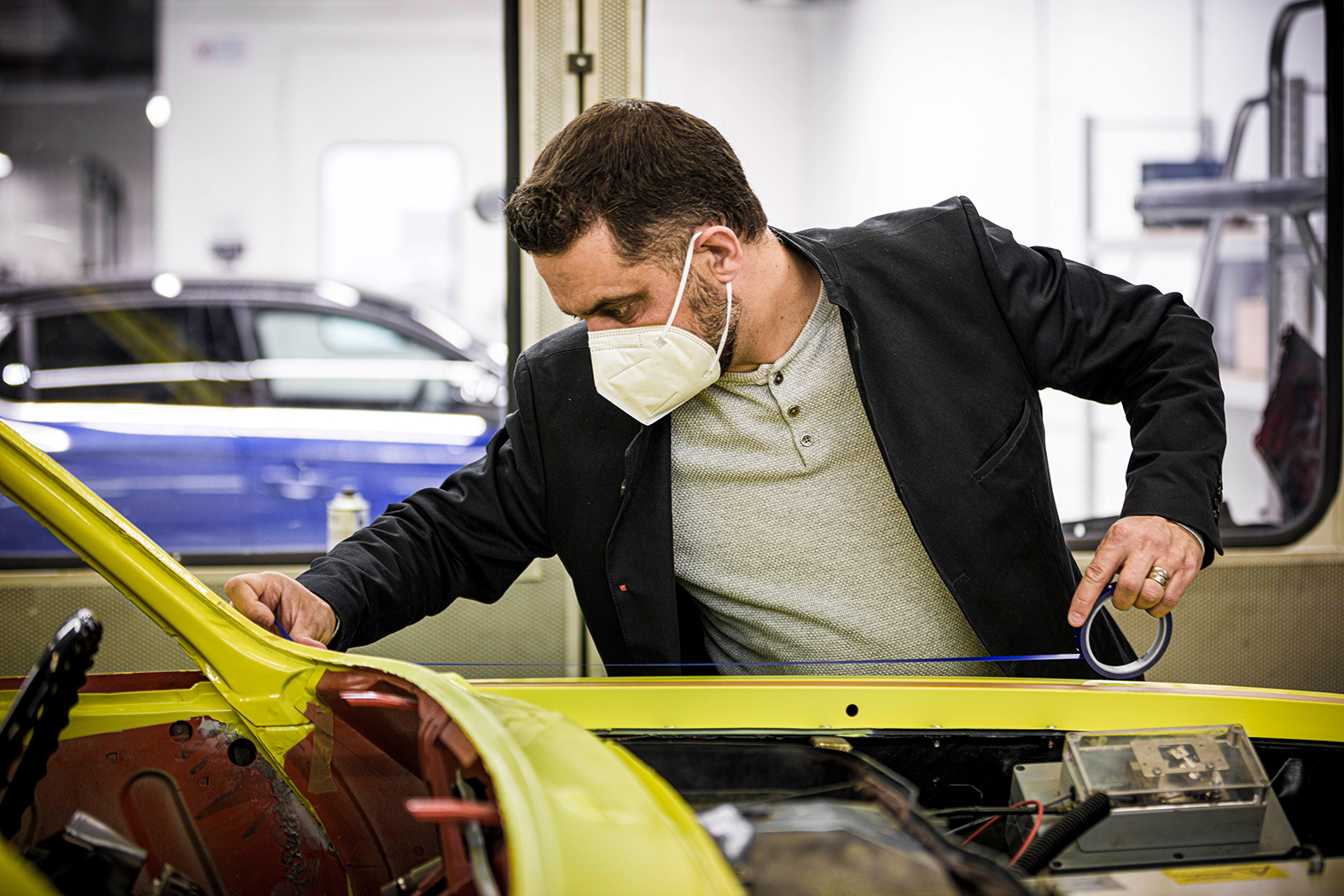
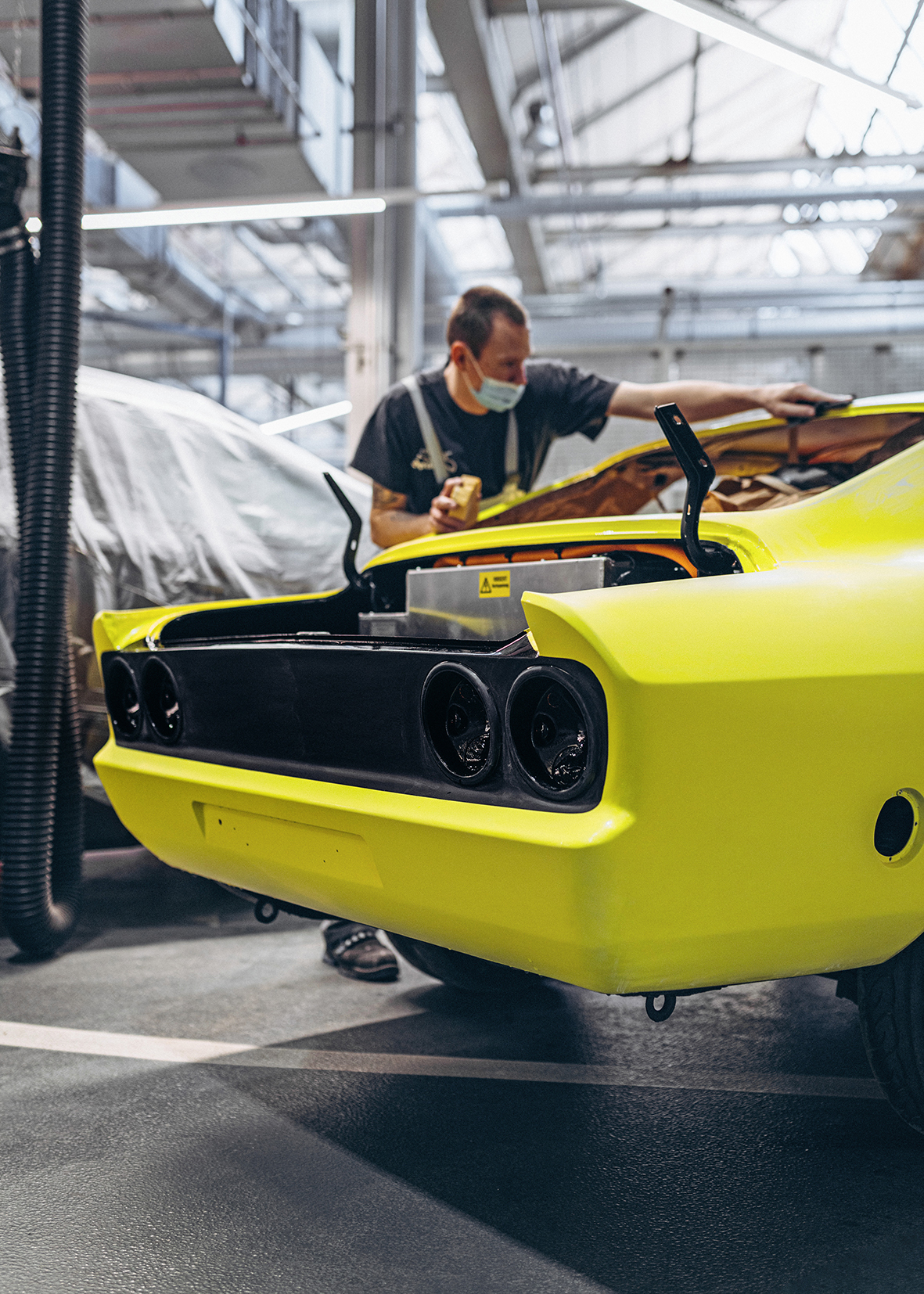
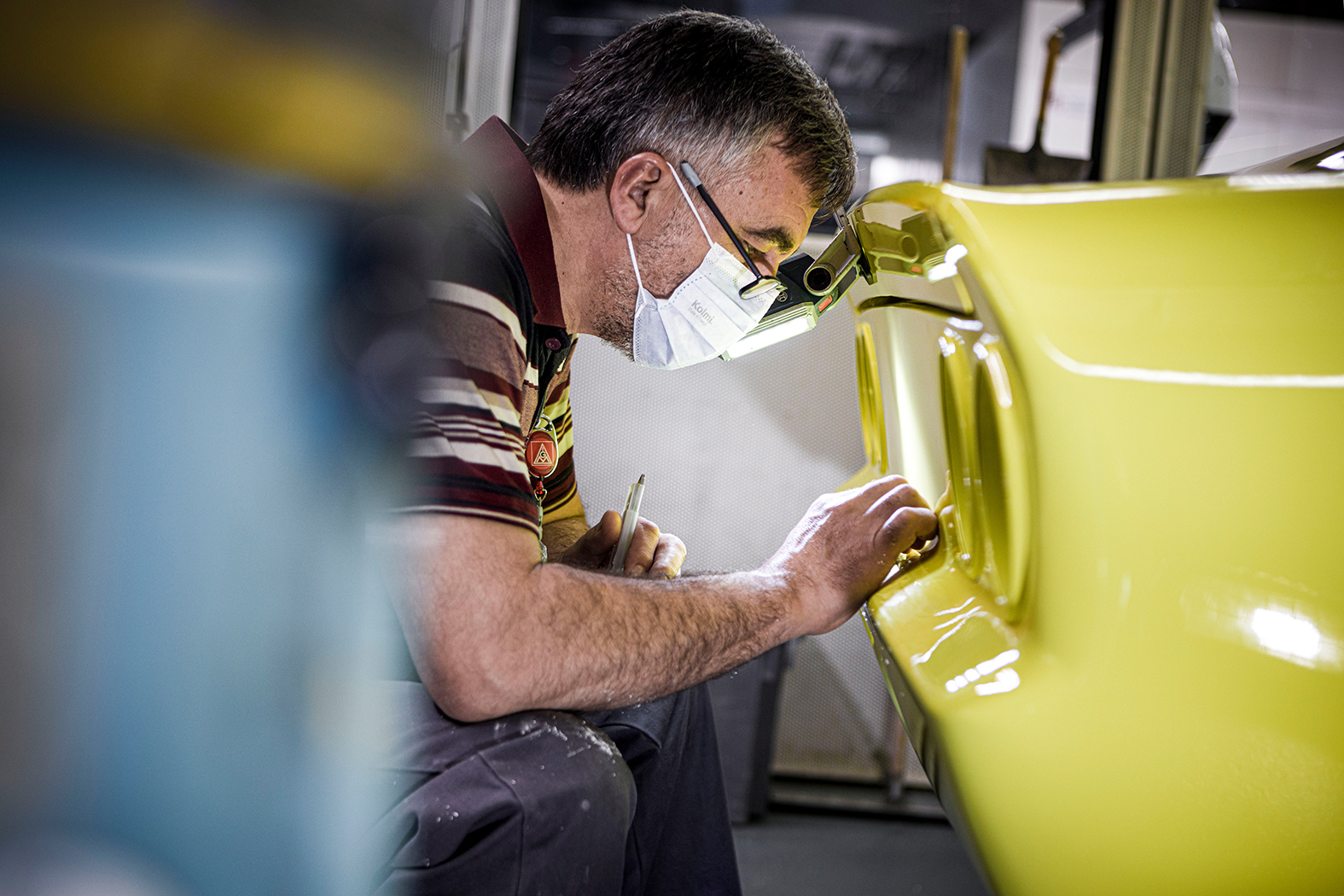
▲ A statement in Opel yellow: Car painter Florian Schmitt during final finishing work.
◀ Attention to detail: Panel-beater Ünsal Keser checks the paint on the rear.
The best ingredients:
Electric and digital
“This mixture of zeitgeist and today is absolutely fascinating,” explains Pierre-Olivier Garcia, Opel Global Brand Design Manager, on behalf of the Manta GSe team. Because the development team wanted to preserve the original fascination of the classic car and at the same time bring top innovations into play. The front of the vehicle and the instrument panel reflect this balancing act particularly impressively. The interior features a fully digital cockpit with large touchscreens, while the analogue instruments have disappeared. At the same time, the ventilation flaps and heating controls from the seventies were retained, with the model building team providing a lot of support here.
Since the actual function of the radiator grille, cooling the engine, only plays a secondary role in a RestoMod, a free space literally opened up for the team and they added a visual highlight to the front of the neo-classic – the Pixel Vizor. The display can communicate messages in words and characters, for example. “But only when the vehicle is stationary. It has to be switched off when the car is in motion as required by the TÜV,” explains Peter Junghanns, Opel Brand Manager. There are no bumpers on this Manta either. But here, too, typical style elements of the Manta A have been retained. The three-dimensionally designed LED taillights, for example, are based on the round taillights of the original. Junghanns: “The conversion was a huge job for the coachbuilders at the Service Workshop and the colleagues in the Concept Workshop.”
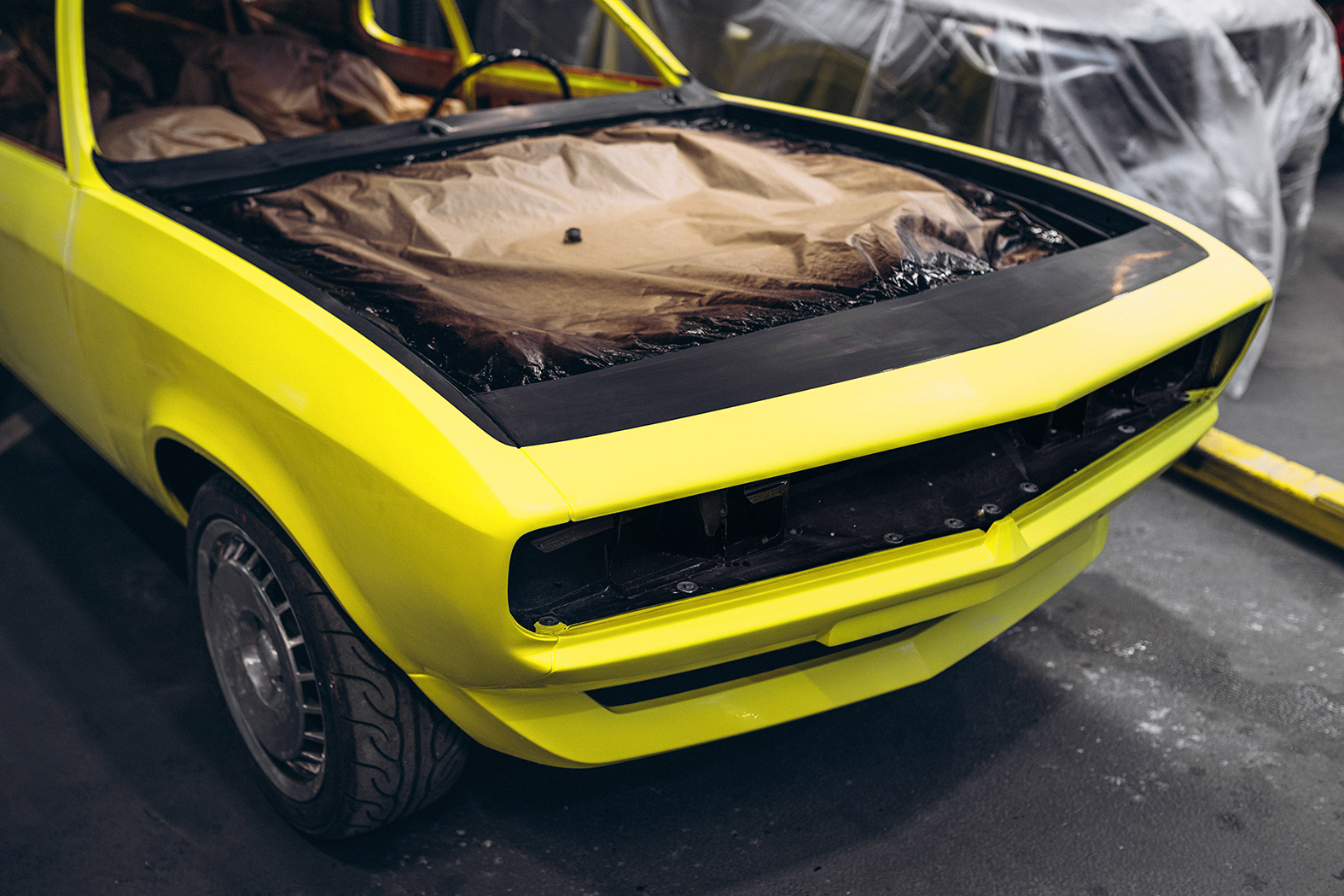
▲ Matt beauty: The clear coat is still missing, the engine compartment is already masked off.
► A classic car goes digital: Tony Bailey expands the electrical system for the Pixel Vizor and the Pure Panel.
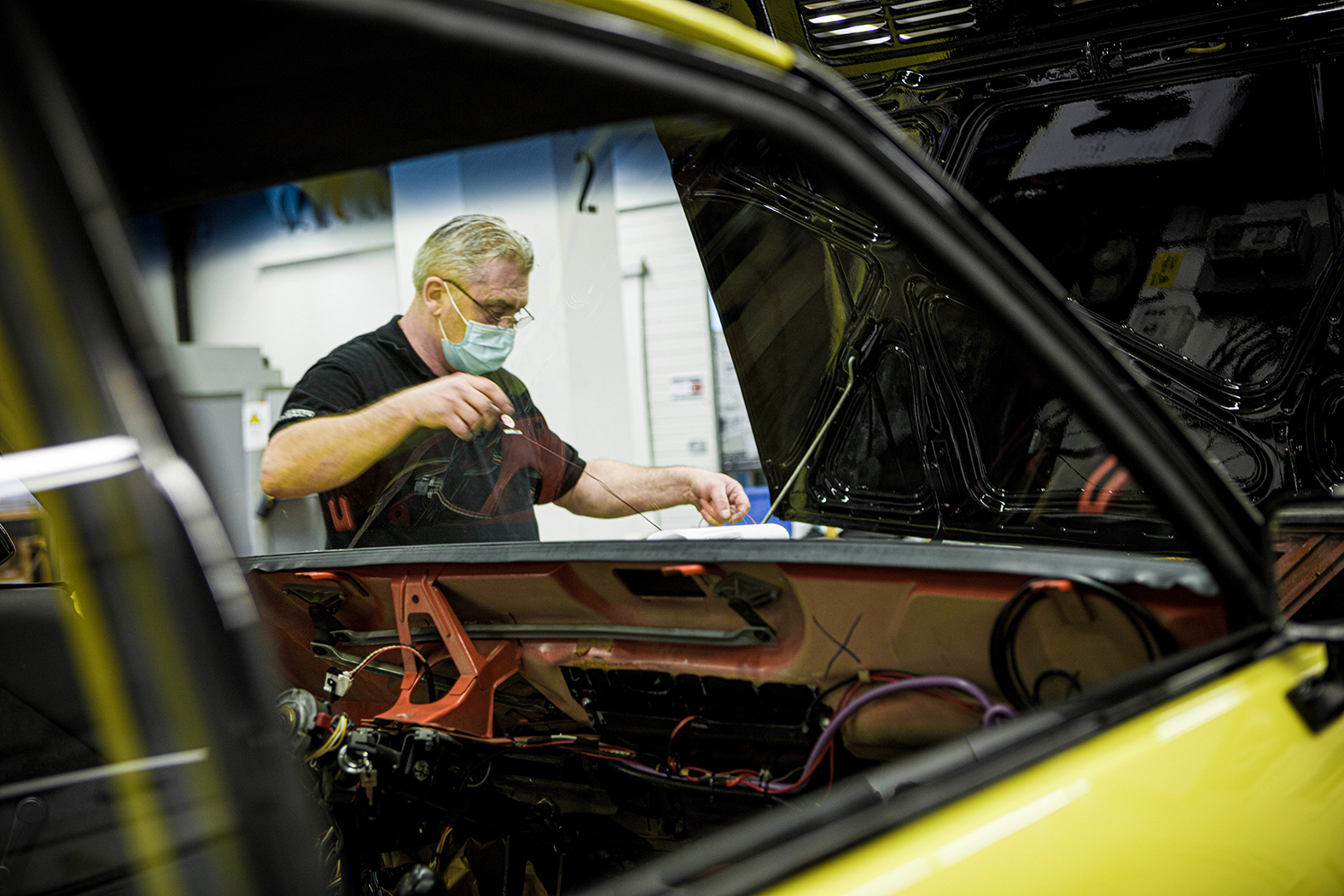
From experience: Rear-wheel drive with manual transmission
When it came to the gearbox, the team made life difficult for itself – and quite deliberately so. The first owner had chosen an automatic transmission for her Manta A. This was technically still in order. But it was rather a rarity for a Manta of the seventies. The Opel team wanted the classic four-speed gearbox for the ElektroMOD that had been installed in the millions at the time. So the engineers designed an adapter that enabled the Opel gearbox to be coupled to a larger clutch. Then they needed a longer propeller shaft from the Opel Classic parts warehouse. The brake system was adapted to the increased vehicle performance. Larger stoppers were fitted to the front axle and the rear axle was converted from drum to disc brakes.
While the suspension is firm at the front, it is softer at the rear, so that the Manta always has plenty of traction in reserve. After all, the ElektroMOD is the most powerful Manta of all time, apart from a few tuning and racing versions. The power and torque of the 108 kW/147 hp synchronous motor is put down on the road via classic rear-wheel drive. For good traction and a low centre of gravity, the 31 kWh lithium-ion battery was installed as far forward as possible in the boot. The Manta GSe still offers enough space for four adults and luggage for a fortnight’s holiday in Italy.
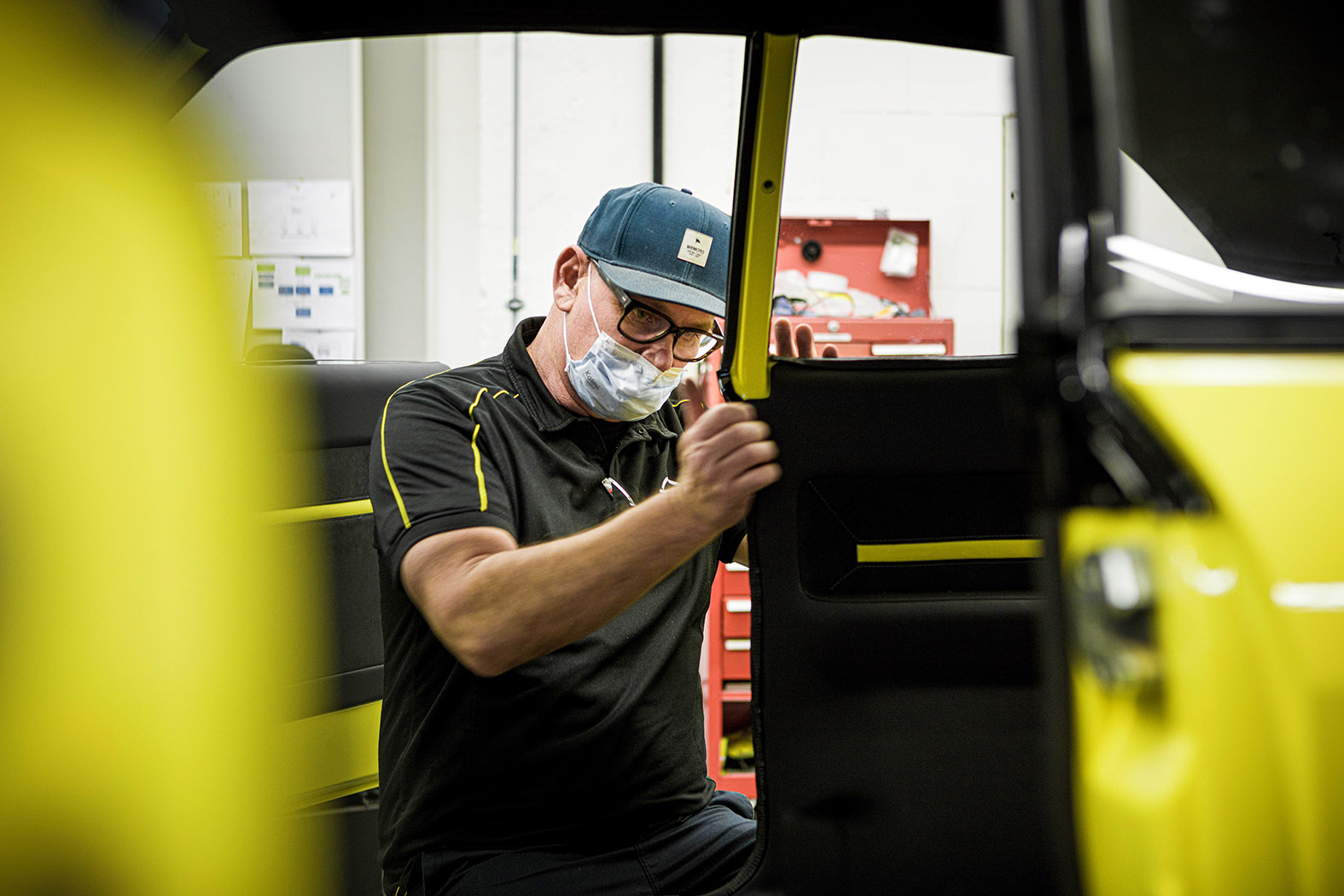
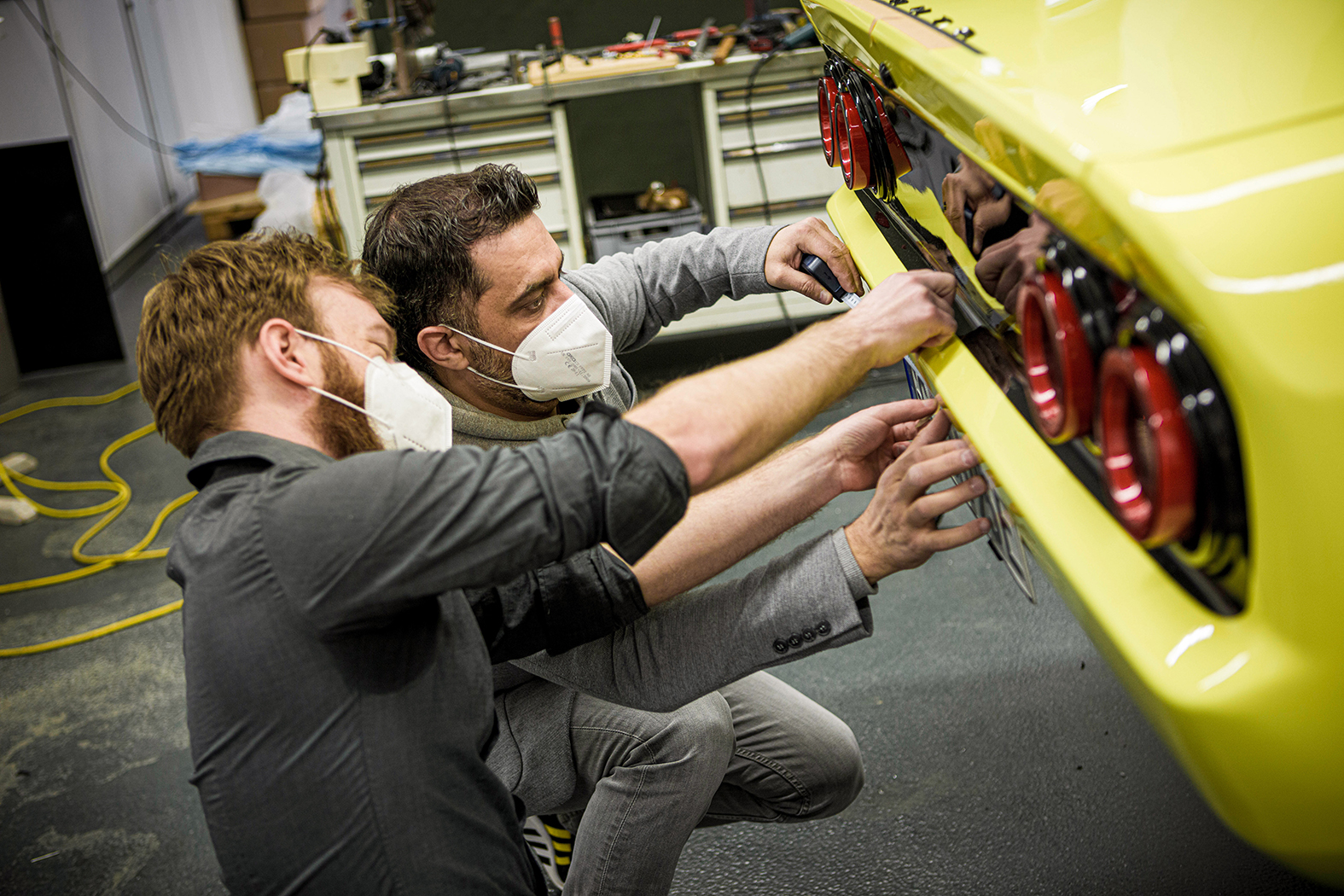
▲ Precise workmanship: Opel Classic expert Jens Cooper assembles the door panels, locks and various mouldings.
◀ Rear view: The designers modelled the three-dimensional LED taillights based on the round taillights of the original.
After the ElektroMOD conversion the Manta weighs about 1,137 kilogrammes – 175 kg more than the original but still much less than many modern cars with a conventional combustion engine. When driven normally, the GSe can achieve a range of 200 kilometres and with a light-footed driver even more. And the e-Manta can of course recuperate energy like any other Opel electric car. In order to activate the energy recuperation, all the driver has to do is operate a switch mounted in the glove compartment.
Labour of love:
Tradition meets modern
And so how does it feel to drive the Manta GSe ElektroMOD? Jens Cooper, an employee of the Classic Workshop, takes it out for a test drive. He starts the engine with the ignition key – the Manta rolls out of Hall K6 onto the Rüsselsheim plant premises almost silently. Then he has the choice of putting it in fourth gear and just driving off: “The torque of the electric motor is high enough to handle everything in one gear ratio.” A classic car expert, however, drives the Manta as it should be driven and shifts cleanly through the four gears of the Opel transmission. In the process, the Manta GSe accelerates at a lively pace. “Nevertheless, you enjoy a very similar driving experience to the original – although our Manta GSe even surpasses the top GT/E model of the time in terms of dynamics,” explains Jens Cooper. “Especially in the lower gears, you feel the high torque of the electric motor – and at the same time experience the 70s feeling – simply great.” It is a vehicle like no other Opel has ever built. One that moves and inspires people, and one that was only made possible by an outstanding team effort.
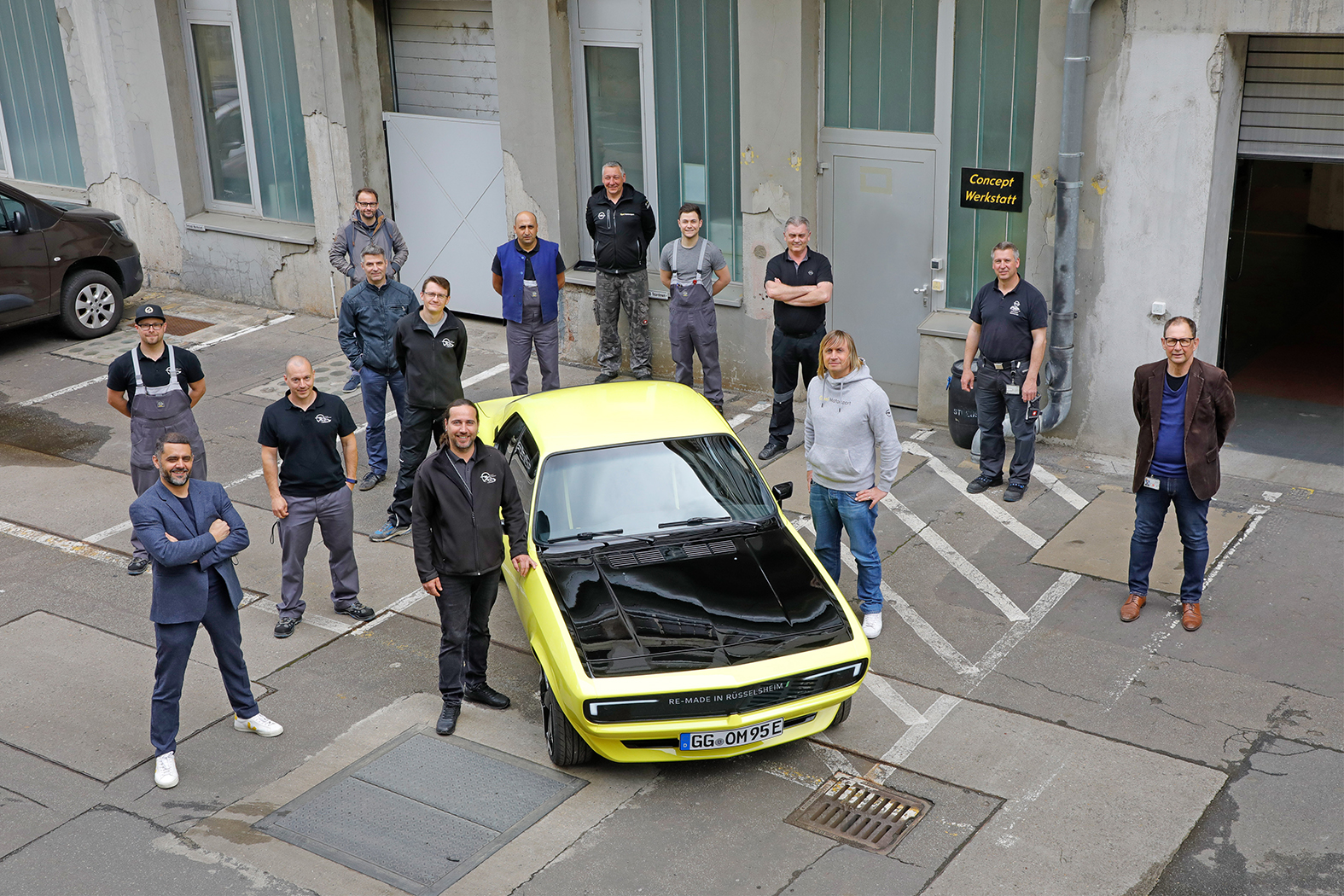
▲ Done! The Concept Workshop team together with designer Pierre-Olivier Garcia (front left) and project manager Peter Junghanns (third from right) with the Manta GSe RestoMod.
▼ First test drive: Opel Classic expert Jens Cooper was the first to test the driving qualities of the Manta GSe RestoMOD. His conclusion: “My expectations were exceeded – by far.”
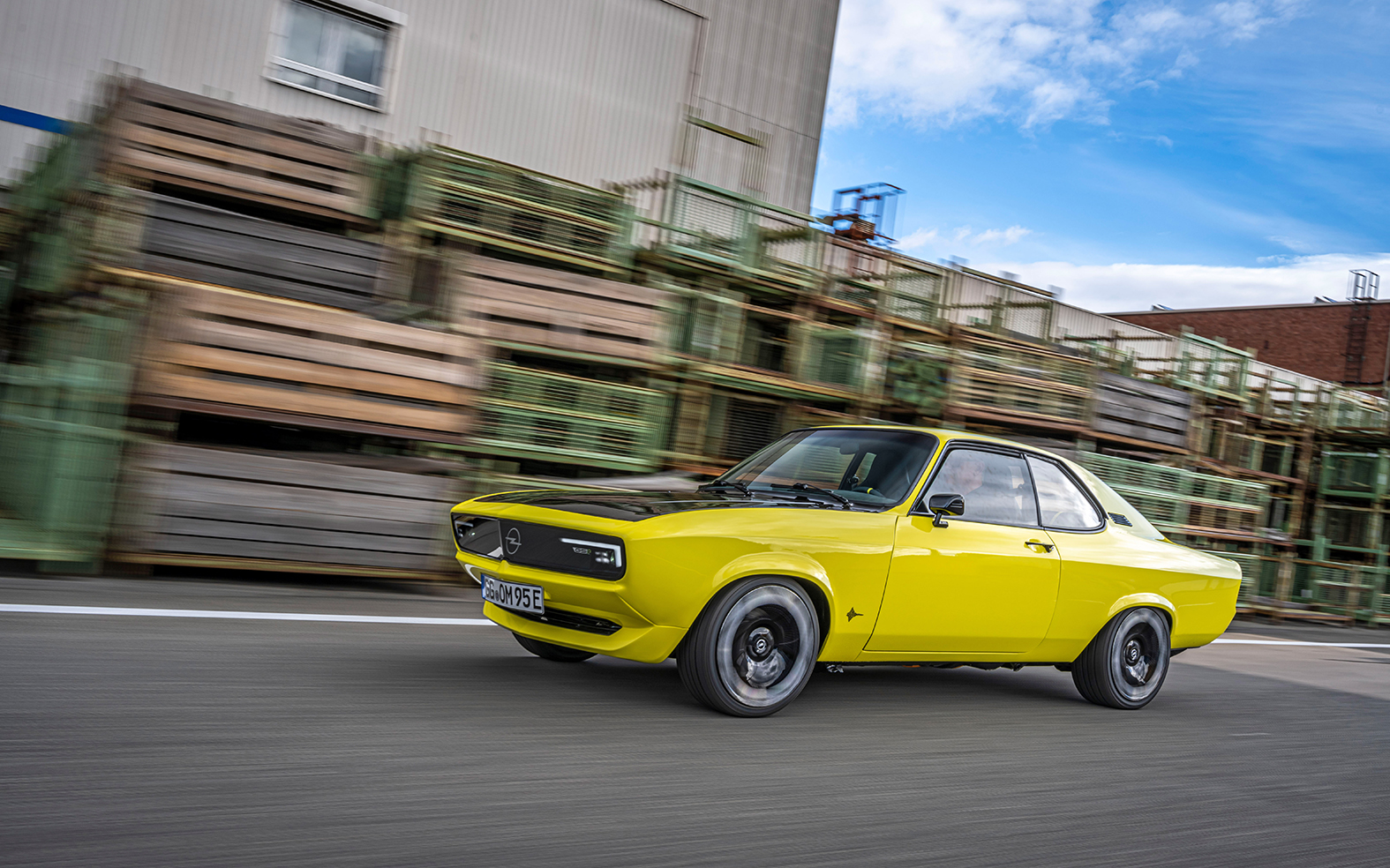
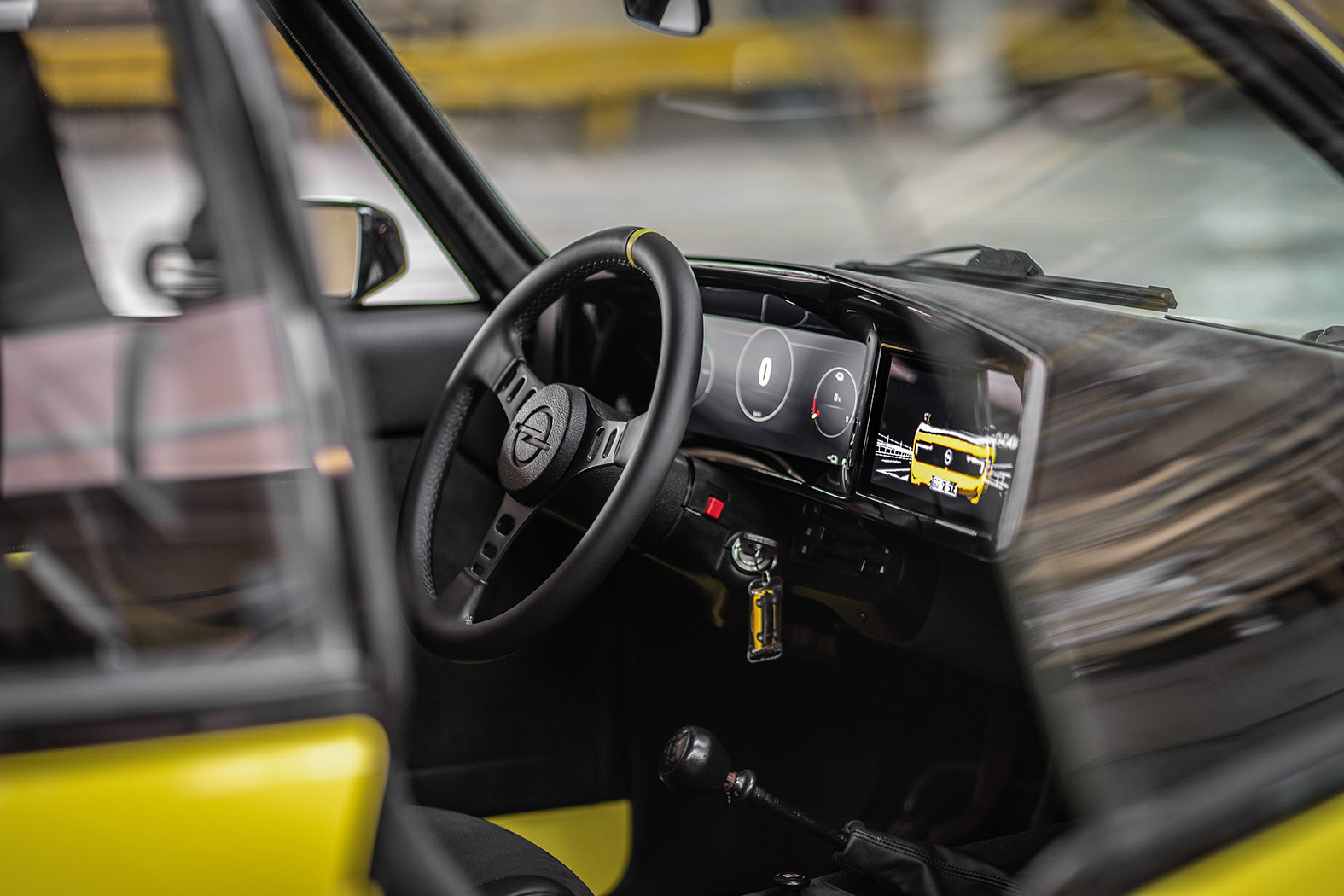
▲ Tradition meets modern: A view of the digital Pure Panel, flanked by the original sports steering wheel and the manual gear lever.
► Striving for perfection: Sometimes things got tricky in unexpected places, such as seat installation. To achieve the lowest possible seat position, Michael Splieth from the Concept Workshop brought all his know-how to bear. He changed mounting points and brackets until everyone was satisfied.
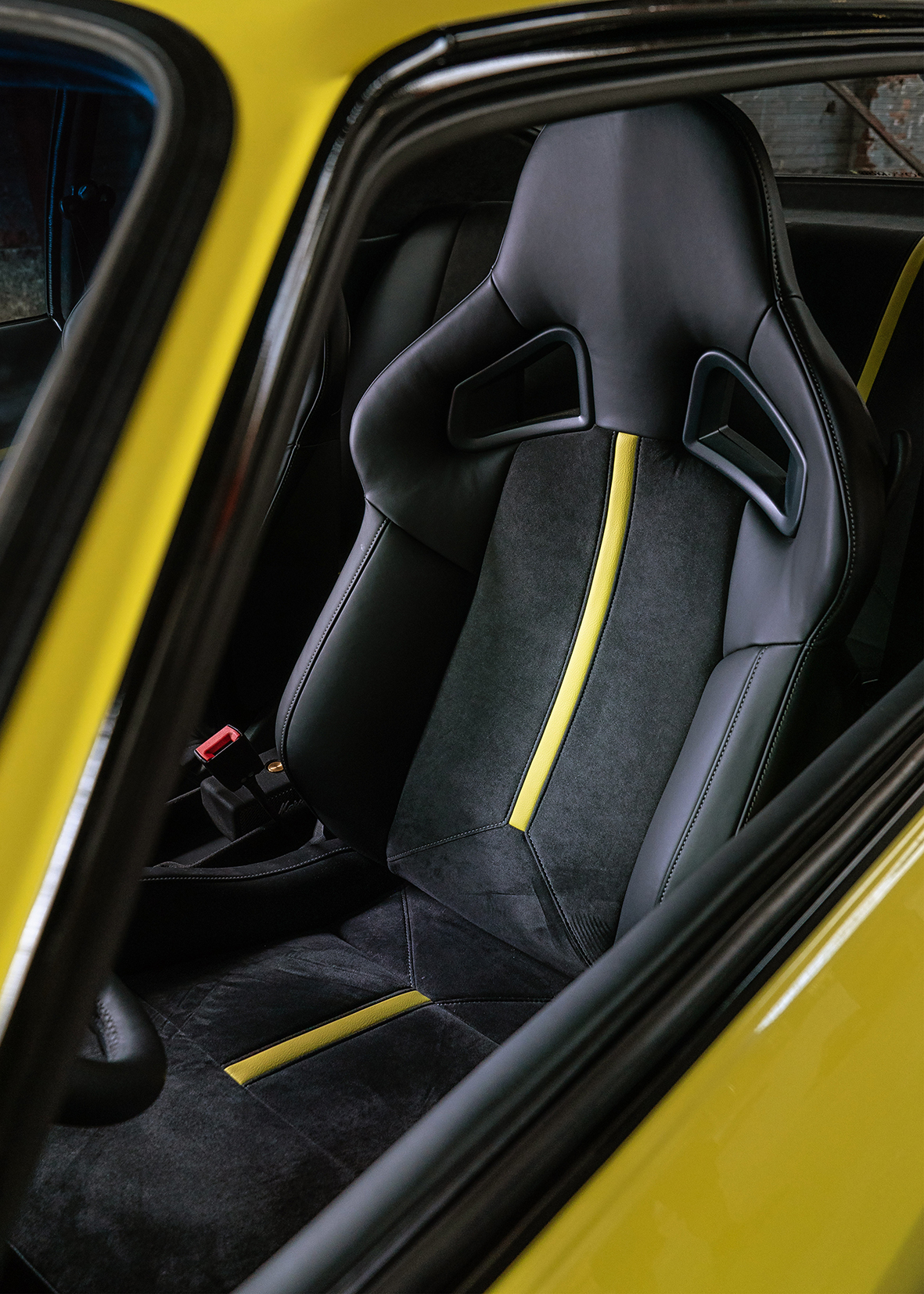
August 2021
